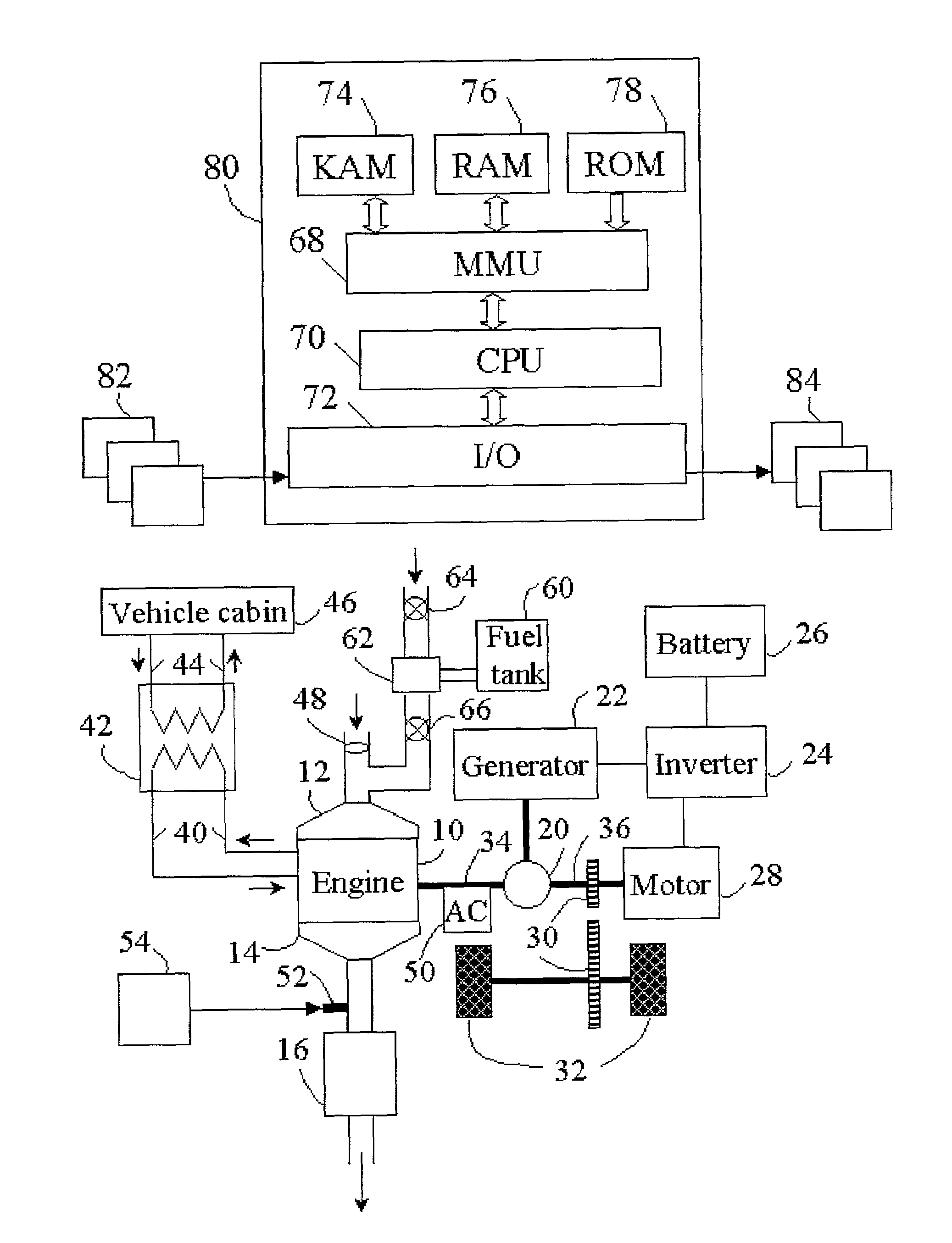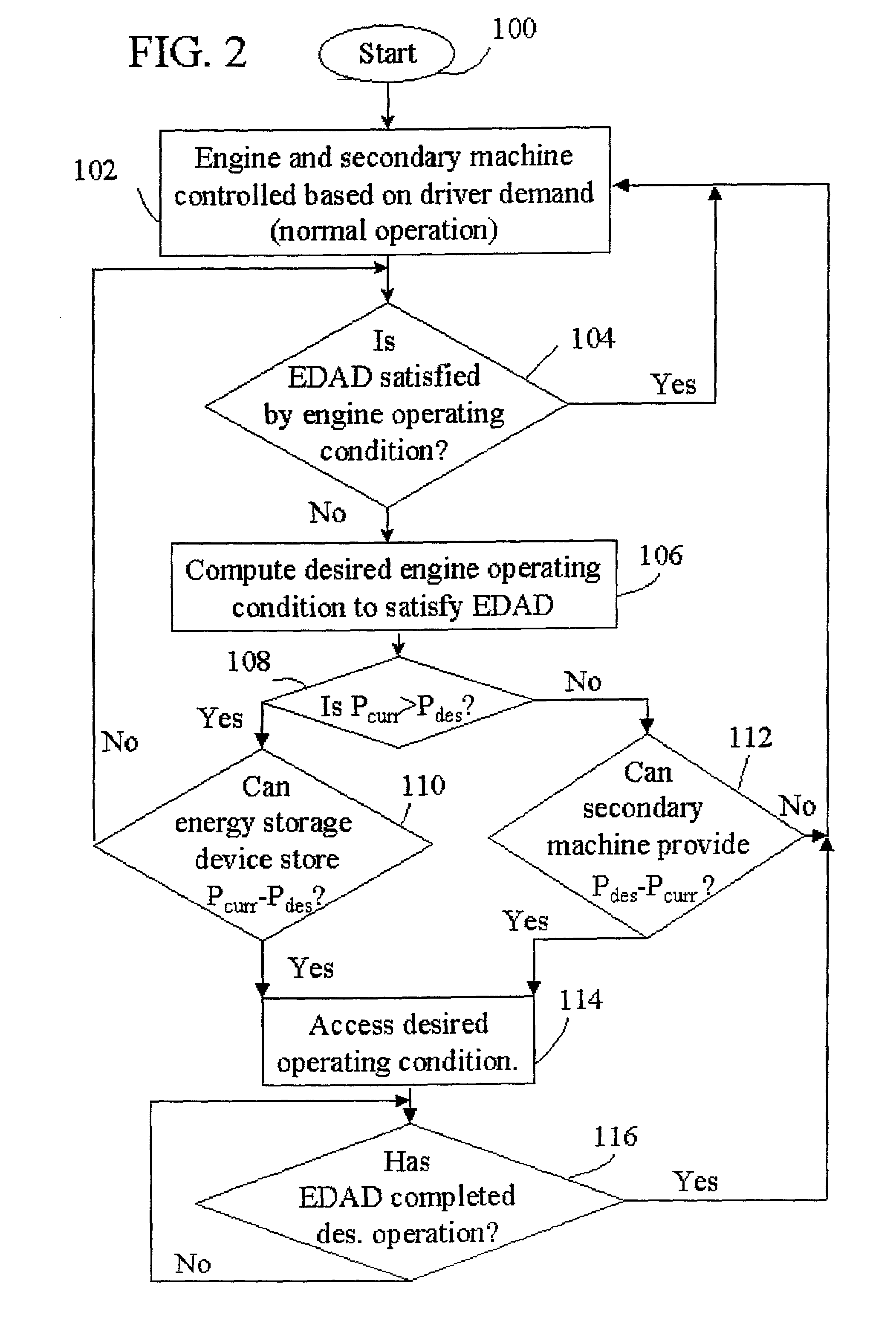Control strategy for an internal combustion engine in a hybrid vehicle
- Summary
- Abstract
- Description
- Claims
- Application Information
AI Technical Summary
Benefits of technology
Problems solved by technology
Method used
Image
Examples
Embodiment Construction
[0019]An example of a hybrid vehicle system is shown in FIG. 1. The hybrid vehicle has an engine 10 and electric motor 28, both of which can provide motive force to driving wheels 32. Power split device 20 is coupled to electric motor 28, generator 22, and engine output shaft 34 of engine 10. Power split device 20 may cause the output of engine 10 to be delivered to output shaft 36 or to generator 22. Output shaft 36 is coupled to the driving wheels 32 via gear set 30. Output shaft 36 may be supplied power by engine 10, electric motor 28, or a combination of the two. Generator 22 is connected to battery 26 via an inverter 24. Power generated by engine 10, which is in excess of that needed at the driving wheels 32, can be supplied to generator 22, which ultimately stores energy in battery 26. Energy can be extracted from battery 26 through inverter 24 and provided to motor 28.
[0020]The hybrid system of FIG. 1, commonly referred to as an electric hybrid, is provided as one example con...
PUM
 Login to View More
Login to View More Abstract
Description
Claims
Application Information
 Login to View More
Login to View More - R&D
- Intellectual Property
- Life Sciences
- Materials
- Tech Scout
- Unparalleled Data Quality
- Higher Quality Content
- 60% Fewer Hallucinations
Browse by: Latest US Patents, China's latest patents, Technical Efficacy Thesaurus, Application Domain, Technology Topic, Popular Technical Reports.
© 2025 PatSnap. All rights reserved.Legal|Privacy policy|Modern Slavery Act Transparency Statement|Sitemap|About US| Contact US: help@patsnap.com



